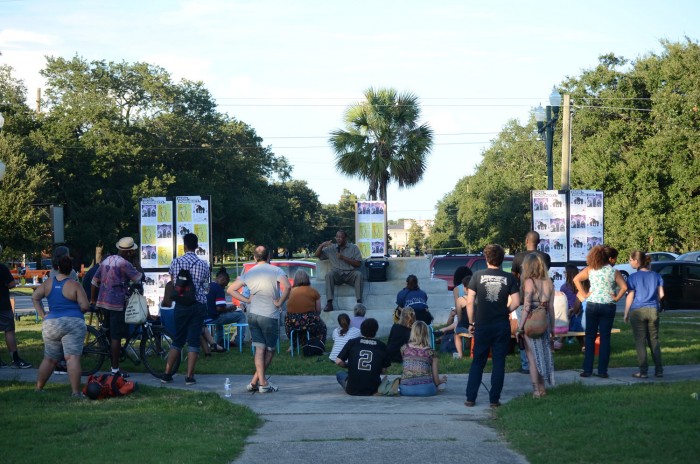Designer Bryan C. Lee JR and his team wants to turn the city of New Orleans in the United States (US) into an eco-friendly metropolis starting with the Claiborne Cultural Innovation District (CID). He envisions a 19-block transformation of space in the historic city. The speculative project is one expample of the ways that cities and their function can be changed with human-centred design.
Lee envisions a 19-block transformation of space beneath the elevated 1-10 expressway along Claiborne avenue built with green infrastructure. Within the transformation, the project is envisioned to usher in a world-class market with arts, crafts, local vendors, classrooms, exhibition space and more.
The site, he says, could become a cultural hub and economic driver if it supports indigenous entrepreneurs and sustainable practices. Lastly, it will be resident-governed, focused on providing easy pathways to business ownership, capacity planning and workforce development.
It'll be no small task, but under the company Colloqate, projects like the CID transformation plan take pride of place.
Colloqate is a non-profit organisation that caters to marginalised communities in New Orleans. From the livelihoods, homes and people lost during Hurricane Katrina in 2005 to the battles fought during the Civil Rights Movement years before, New Orleans has maintained the vibrant spirit it's known for all over the globe. But there's still work to be done.
In another project called Paper Monuments, Colloqate is calling for the removal of Confederate monuments throughout the city. The Confederacy of the United States is synonymous with the last dregs of slave-owning States on the continent and today, its flag and memorabilia are the calling cards for modern right-wing movements.
“Paper Monuments combines public pedagogy and participatory design to expand our collective understanding of New Orleans, and asks our citizens to answer the question: What is an appropriate monument to our city today?” explains Lee.
Many of Colloqate's projects look to undo the structures of the past, highlighting the way design and architecture were often used as tools of oppression. Segregation, for instance, was often spatial, and it informed the way cities were built and amenities arranged.
In Blights Out, Lee looks at the remnants of racial segregation and its new iteration, gentrification. Colloqate volunteers are looking at the ways that long-standing government policies are still used to debilitate people of colour who still struggle to own homes.
The colloqate team wants to challenge the city’s policies through dialogue, art and action.They went on to create a campaign which included 12 billboards and 5 sign messages. Each billboard was filled with policies that are threating to the poor in the wake of the natural disaster.
“We seek the redress of policies and values imposed in the wake of a disaster that reinforce ecological apartheid in our housing landscape and that threaten to turn our city into a gentrified fortress that shelters the wealthiest from the rising-up of seas and people,” says Lee.
The designer and his team first came across this issue when they wanted to purchase a two-story blighted property and transform it into a multipurpose centre, which could be offered as affordable housing to the community, but the plan fell short due to those set policies.
“This process of acquiring property was fraught with the same confusion and corruption that ensnares housing in New Orleans. While frustrating, this process was eye-opening, providing significant insight into the reasons for our city's current affordable housing crisis,” he explains.
In 2018, Lee and his team developed the Design Justice Platform, which is a living document created to establish a social and environmental code of ethics for designers and architects. He knows that he can’t simply change policies and rules, but he can start by creating a design standard.
In September 2018, Lee and his team at Colloqate teamed up with American Institute of Architects (AIA) during the first ever Design Justice Summit. The summit brought together over twenty-four social impact architects and designers from across the US to discuss and share knowledge surrounding issues of injustices.
“Our mission is to codify and grow a diverse community of public interest design leaders with the capacity to shape the future of the profession towards equity. We hope to inspire and challenge these leaders to take the knowledge learned throughout the summit and return to their respective communities to innovate and implement,” says Lee.
Read more:
Design Indaba 2019 presents: Architecture driven by social responsibility
HUT: Architecture concept for a spiritual community
Making sense of Ghana’s built environment with architect Alice Asafu-Adjaye












